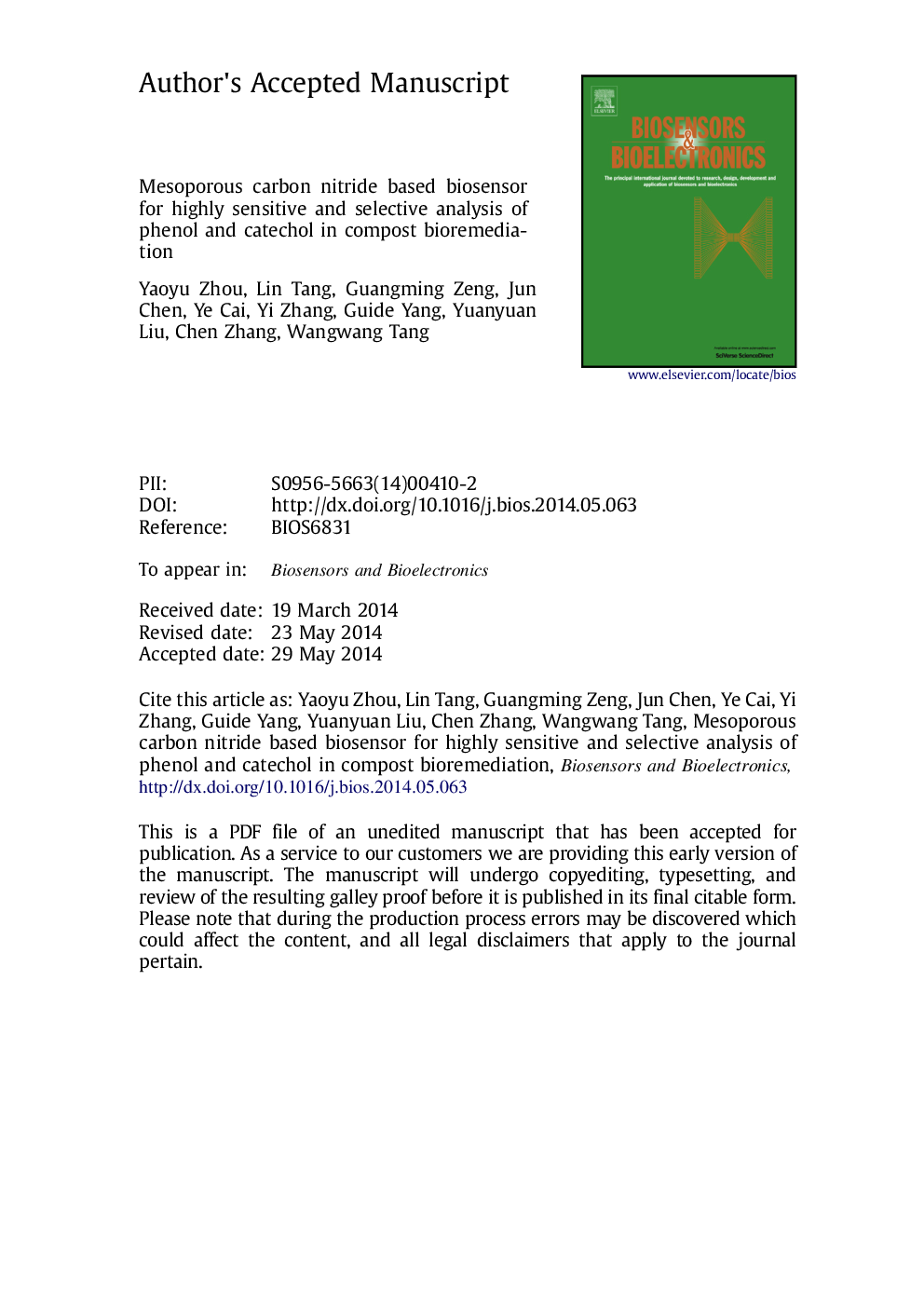| Article ID | Journal | Published Year | Pages | File Type |
|---|---|---|---|---|
| 7233307 | Biosensors and Bioelectronics | 2014 | 22 Pages |
Abstract
Herein, we reported here a promising biosensor by taking advantage of the unique ordered mesoporous carbon nitride material (MCN) to convert the recognition information into a detectable signal with enzyme firstly, which could realize the sensitive, especially, selective detection of catechol and phenol in compost bioremediation samples. The mechanism including the MCN based on electrochemical, biosensor assembly, enzyme immobilization, and enzyme kinetics (elucidating the lower detection limit, different linear range and sensitivity) was discussed in detail. Under optimal conditions, GCE/MCN/Tyr biosensor was evaluated by chronoamperometry measurements and the reduction current of phenol and catechol was proportional to their concentration in the range of 5.00Ã10â8-9.50Ã10â6Â M and 5.00Ã10â8-1.25Ã10â5Â M with a correlation coefficient of 0.9991 and 0.9881, respectively. The detection limits of catechol and phenol were 10.24Â nM and 15.00Â nM (S/N=3), respectively. Besides, the data obtained from interference experiments indicated that the biosensor had good specificity. All the results showed that this material is suitable for load enzyme and applied to the biosensor due to the proposed biosensor exhibited improved analytical performances in terms of the detection limit and specificity, provided a powerful tool for rapid, sensitive, especially, selective monitoring of catechol and phenol simultaneously. Moreover, the obtained results may open the way to other MCN-enzyme applications in the environmental field.
Related Topics
Physical Sciences and Engineering
Chemistry
Analytical Chemistry
Authors
Yaoyu Zhou, Lin Tang, Guangming Zeng, Jun Chen, Ye Cai, Yi Zhang, Guide Yang, Yuanyuan Liu, Chen Zhang, Wangwang Tang,
